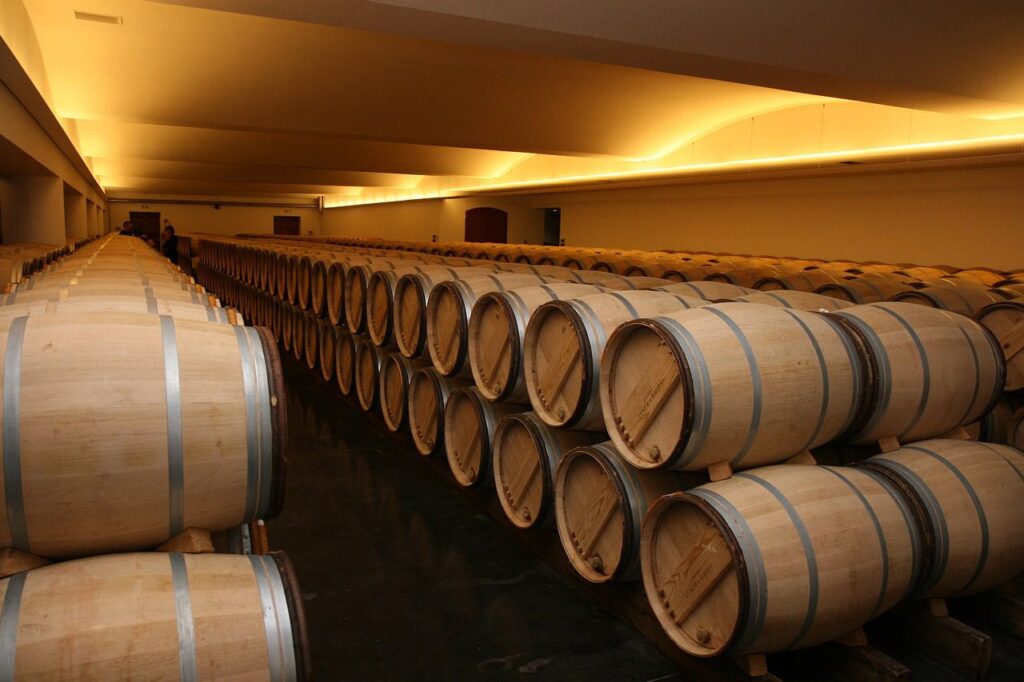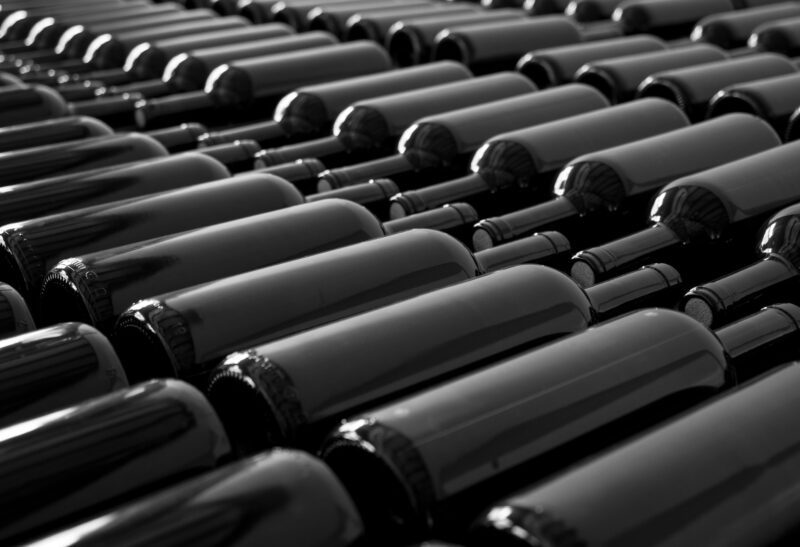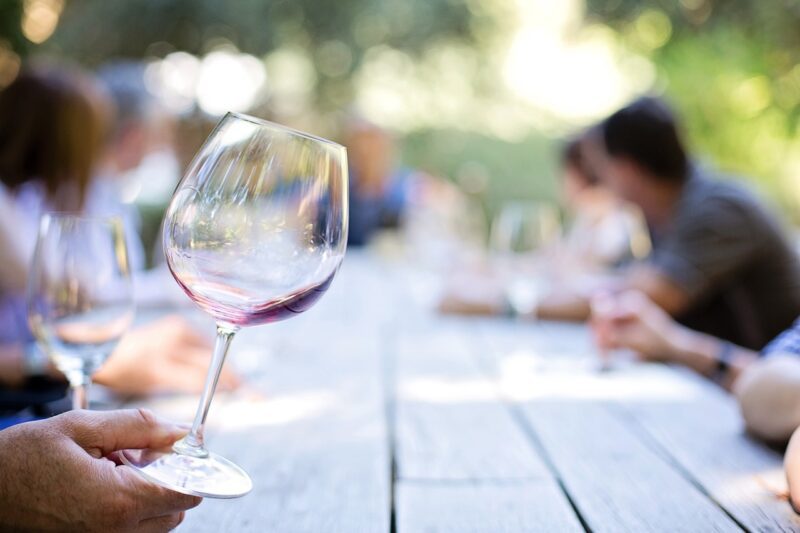The Importance of Oak in Winemaking: Learn Everything About It
KEY POINTS |
| • Types of Oak: Different oak types, such as French, American, and Slavonian oak, impart unique flavors and characteristics to wine. French oak provides subtle spice and complexity, American oak adds bold vanilla and coconut notes, and Slavonian oak offers a more delicate and earthy influence. |
| • Oak Aging Techniques: Oak aging techniques, including barrel size, toast levels, and aging duration, significantly affect wine flavor and structure. Lightly toasted barrels offer delicate aromas, while heavily toasted barrels contribute more intense flavors like coffee and chocolate. |
| • Balancing Oak Influence: Effective oak aging requires careful balancing to enhance a wine’s character without overwhelming it. Winemakers must consider the grape variety, desired flavor profile, and oak interaction to achieve a harmonious integration of oak-derived flavors and wine characteristics. |
The Role of Oak in Winemaking
Oak is a crucial element in winemaking, influencing wines through its flavors, aromas, textures, and aging potential. This natural material, derived from various species of oak trees, including Quercus robur (European oak) and Quercus alba (American oak), plays a pivotal role in shaping the characteristics of wines from around the world.
Types of Oak Used in Winemaking
Oak species used in winemaking vary significantly in their characteristics, each imparting different qualities to the wine. The primary oak types are French oak, American oak, Slavonian oak, and other regional varieties. Each type contributes unique flavors and textures to the wine, influencing its final profile.
Flavor Development and Complexity
One of the most significant contributions of oak to wine is flavor development. Oak barrels and alternatives like oak chips and staves introduce flavors such as vanilla, spice, toast, caramel, and coconut into wines. These flavors arise from compounds within oak wood, including lignin, hemicellulose, and volatile organic compounds. The choice of oak type, the level of toasting applied during barrel production, and the duration of aging all influence the intensity and complexity of these flavors.
Structural Enhancements
Moreover, oak enhances a wine’s structural complexity. Oak tannins interact with grape tannins, softening a wine’s astringency and contributing to its mouthfeel. This interaction can enhance the wine’s body, roundness, and perceived sweetness, depending on the grape variety and winemaker’s preferences. Oak also plays a role in stabilizing color pigments in red wines and promoting the development of complex secondary aromas and flavors through controlled oxidation.
The Role of Oxygen Interaction
Understanding the oxygen interaction with oak during the aging process is crucial. Oak barrels, due to their slightly porous nature, allow minute amounts of oxygen to interact with the wine. This controlled oxidation process can soften harsh tannins, integrate flavors, and promote the development of desirable aromas like cedar, tobacco, and leather. Winemakers carefully monitor this process to achieve a harmonious balance between fruit expression and oak influence.
Microbiological Stability
The significance of oak in winemaking extends beyond flavor and structure. Oak-aged wines often exhibit enhanced aging potential. The gradual release of oak-derived compounds and the wine’s interaction with oxygen contribute to its evolution in the bottle. Wines aged in oak barrels can develop tertiary aromas and flavors over time, adding layers of complexity and nuance that enhance their overall quality.
Furthermore, oak plays a role in the microbiological stability of wines. The porous nature of oak barrels allows for micro-oxygenation, which can inhibit the growth of spoilage organisms and contribute to the wine’s longevity. This aspect is particularly important for aging wines, where oak barrels serve not only as vessels for maturation but also as tools for enhancing wine quality and stability.
Oak Application Methods
Winemakers employ various methods to incorporate oak into the winemaking process, each offering distinct advantages and effects on the final product.
Oak Barrels
Traditional oak barrels are crafted from seasoned oak wood, typically sourced from forests in France, the United States, Hungary, or other oak-producing regions. French oak barrels are prized for their fine grain and subtle influence on wine, while American oak barrels are known for imparting robust flavors more rapidly. The size of oak barrels, commonly 225 liters for Bordeaux barrels and 300 liters for Burgundy barrels, affects the surface area of contact between wine and oak, influencing the intensity of oak flavors and aromas.
French Oak
French oak, primarily sourced from forests in central France such as Allier, Tronçais, and Vosges, is highly esteemed for its fine grain and subtle influence on wine. The tight grain of French oak allows for a slow and controlled release of oak compounds into the wine, resulting in a refined integration of flavors and aromas. This gradual infusion contributes to a complex and elegant profile, making French oak barrels a popular choice for high-quality wines that require extended aging.
French oak imparts delicate flavors of spice, toast, and vanilla, along with a slight tannic structure that enhances the wine’s mouthfeel. The subtle nature of French oak complements the wine’s inherent characteristics, allowing for a balanced and harmonious profile. Additionally, the fine grain of French oak barrels provides a longer aging potential, as the slow release of oak compounds promotes the development of intricate secondary and tertiary aromas over time.
American Oak
American oak, primarily sourced from forests in Missouri, Minnesota, and the Appalachian region, is known for its broader grain and more pronounced impact on wine. American oak barrels release oak compounds more rapidly than their French counterparts, leading to a more immediate and robust influence on the wine’s flavor profile. This characteristic makes American oak particularly well-suited for wines that benefit from bold and expressive oak notes.
American oak imparts distinctive flavors of vanilla, coconut, and sweet spices, along with a creamy texture that enhances the wine’s body and richness. The broader grain of American oak also allows for a higher degree of oxygen interaction, which can soften tannins and promote the development of complex secondary aromas. Wines aged in American oak barrels often exhibit a more pronounced oak character, with vibrant and expressive flavors that complement the fruit and other varietal attributes.
Slavonian Oak
Slavonian oak, sourced from the northeastern region of Croatia, has also gained popularity among winemakers, especially in Italy. Known for its dense grain and subtle influence, Slavonian oak imparts delicate spice and earthy notes, making it a preferred choice for aging traditional Italian wines like Barolo and Brunello di Montalcino. The large Slavonian oak casks, often holding thousands of liters, provide a gentler oak influence compared to smaller barrels, allowing the wine to develop complexity over extended aging periods without becoming overly oaky.
Slavonian oak’s dense grain structure means that it imparts a more subdued oak character, which enhances rather than dominates the wine’s flavor profile. This oak type is particularly valued for its ability to integrate seamlessly with the wine, contributing to a balanced and elegant result. The use of Slavonian oak is integral to the production of wines that require a long aging process, as its subtle influence supports the development of complex, age-worthy wines without overwhelming their inherent qualities.
Oak Alternatives
To accommodate diverse winemaking styles and budget considerations, winemakers utilize oak alternatives such as oak chips, oak staves, and oak powders. These alternatives provide flexibility in oak application, allowing winemakers to tailor oak influence to specific wine styles and flavor preferences.
Oak chips and staves are typically added to fermentation tanks or aging vessels, where they release oak-derived compounds into the wine over time. This method is particularly useful for wines that benefit from shorter oak contact periods or require precise control over oak influence. Oak powders, finely ground oak particles, offer another alternative for integrating oak flavors without the need for physical contact with oak wood. These alternatives are often used in commercial winemaking to achieve desired oak characteristics quickly and cost-effectively.
While oak alternatives may lack the complexity and structural benefits of traditional oak barrels, they offer a cost-effective solution for enhancing wine complexity and flavor. Modern winemakers continue to explore and refine these techniques to meet evolving consumer preferences and market demands. By experimenting with different types and quantities of oak alternatives, winemakers can create a wide range of wine styles that appeal to diverse palates.
Effects of Oak on Different Wine Types
Oak influences wines of various styles and grape varieties, each responding uniquely to oak aging techniques.
White Wines
Oak aging can significantly enhance the character and complexity of white wines. Varieties such as Chardonnay benefit from oak fermentation and aging, where oak imparts flavors of butter, toast, and vanilla. The integration of oak in Chardonnay wines enhances their richness and creamy texture, balancing bright acidity with nuanced oak-derived aromas. However, oak influence must be carefully managed to avoid overwhelming delicate white wine profiles, with winemakers opting for lighter toasting levels and judicious oak contact durations.
Other white wine varieties, such as Sauvignon Blanc and Riesling, may also benefit from oak aging techniques, albeit with a more restrained approach. Lighter toasting levels and shorter contact periods help preserve the wine’s fresh fruit character while adding subtle complexity and texture. In these cases, the oak is used to complement rather than dominate the wine, enhancing its depth without masking its inherent brightness and purity.
Red Wines
Red wines derive substantial benefits from oak aging, particularly in terms of structure, flavor development, and aging potential. Full-bodied reds like Cabernet Sauvignon and Merlot undergo extended oak aging to soften tannins and integrate complex oak flavors. French oak barrels are favored for their refined influence on red wines, contributing subtle spice and cedar notes that complement varietal fruit characteristics. In contrast, American oak barrels impart bolder flavors of vanilla, coconut, and sweet spices, enhancing wines with robust tannins and bold fruit profiles.
Lighter red wines, such as Pinot Noir and Grenache, require a more delicate approach to oak aging. Minimal oak contact and lighter toasting levels preserve the wines’ delicate aromatics and vibrant fruit flavors while adding complexity and structure. For these varietals, oak aging is used sparingly to ensure that the wine’s intrinsic characteristics remain prominent while gaining additional layers of nuance and depth.
Rosé Wines
Rosé wines can also benefit from oak aging, though the approach is more delicate to preserve the wine’s freshness and vibrant fruit flavors. Oak contact for rosé wines is typically brief and involves lighter toasting levels to maintain the wine’s pale color and delicate aromatics. The use of neutral oak barrels or minimal oak alternatives allows for subtle flavor enhancement without overpowering the wine’s inherent finesse and balance. This method adds a touch of complexity while ensuring that the wine’s fresh and fruity profile remains at the forefront.
Sweet Wines
Sweet wines, such as Sauternes and late-harvest Rieslings, undergo oak aging to enrich their flavor complexity and balance their natural sweetness. Oak barrels contribute caramel, honey, and dried fruit notes to sweet wines, enhancing their richness and depth. The slow oxidation process in oak barrels also integrates the wine’s flavors and promotes the development of complex tertiary aromas. The result is a harmonious balance between sweetness and oak-derived nuances, creating wines of exceptional depth and character.
Balancing Oak Influence
The art of oak aging lies in achieving a harmonious balance between oak-derived flavors and the intrinsic characteristics of the wine. Winemakers employ various techniques to ensure that oak enhances rather than overwhelms the wine’s natural expression.
Winemaker’s Skill
Skilled winemakers carefully consider oak application throughout the winemaking process, from grape selection to bottling. They tailor oak aging techniques to complement the varietal characteristics and regional terroir of the wine, ensuring a seamless integration of oak-derived flavors. By selecting the appropriate oak type, toasting level, and aging duration, winemakers achieve a nuanced balance that enhances wine complexity and structure.
Overuse of oak can mask the wine’s fruit character and diminish its overall balance. Therefore, winemakers exercise restraint in oak usage, particularly for delicate wine styles or varietals that require minimal oak influence. This approach preserves the wine’s freshness and purity while enhancing its complexity through subtle oak nuances. By meticulously managing oak contact, winemakers can create wines that are both expressive and harmonious, showcasing the best of both the grape and the oak.
Oak Toast Levels and Origin
The choice of oak toast level significantly impacts the flavor profile of aged wines. Lightly toasted barrels preserve oak’s natural sweetness and impart subtle spice and vanilla notes, ideal for delicate white wines and nuanced red varietals like Pinot Noir. Medium toast levels enhance complexity with caramel, toffee, and nutty aromas, complementing medium-bodied red wines such as Merlot and Sangiovese. Heavy toast levels contribute bold flavors of coffee, chocolate, and smoky accents, enhancing robust red wines like Cabernet Sauvignon and Syrah.
Furthermore, the origin of oak barrels influences flavor intensity and character. French oak is renowned for its elegant influence, contributing refined spice and floral notes that complement Old World wine styles. American oak offers more assertive flavors of vanilla, coconut, and sweet spices, enhancing New World wine profiles with bold fruit expression and robust tannins. Winemakers often select oak barrels based on their desired flavor profile and the wine’s regional style, ensuring compatibility and enhancing overall wine quality.
Time and Maturation
The duration of oak aging and maturation periods are critical considerations in winemaking. Extended oak contact allows for gradual flavor extraction and the development of complex secondary characteristics in wines. Reducing oak contact time or opting for lighter toasting levels preserves fruit freshness and varietal purity in delicate wine styles. Winemakers monitor oak aging progress closely, sampling wines to assess oak integration and flavor development over time.
Ultimately, the art of balancing oak influence lies in the winemaker’s ability to harmonize oak-derived flavors with varietal characteristics, ensuring that each wine reflects its terroir and stylistic intent. By refining oak application techniques and embracing innovation, winemakers continue to elevate wine quality and diversity, offering consumers an array of exceptional wines that showcase oak’s transformative impact on flavor, structure, and aging potential.
Oak in Winemaking
Oak’s impact on winemaking is profound and multifaceted, encompassing flavor development, structural enhancement, and aging potential. Whether using traditional oak barrels or innovative oak alternatives, winemakers harness the unique properties of oak to craft wines that reflect their vision and the characteristics of their terroir. The choice of oak type, toasting level, and aging technique all contribute to the final expression of the wine, making oak a crucial element in the art of winemaking. Understanding and mastering these elements allow winemakers to create wines of exceptional quality, depth, and complexity, offering consumers a diverse range of experiences and pleasures from each bottle.





